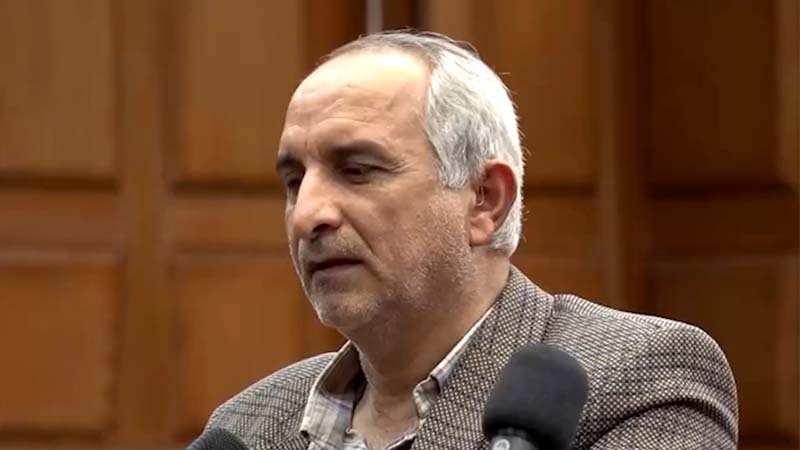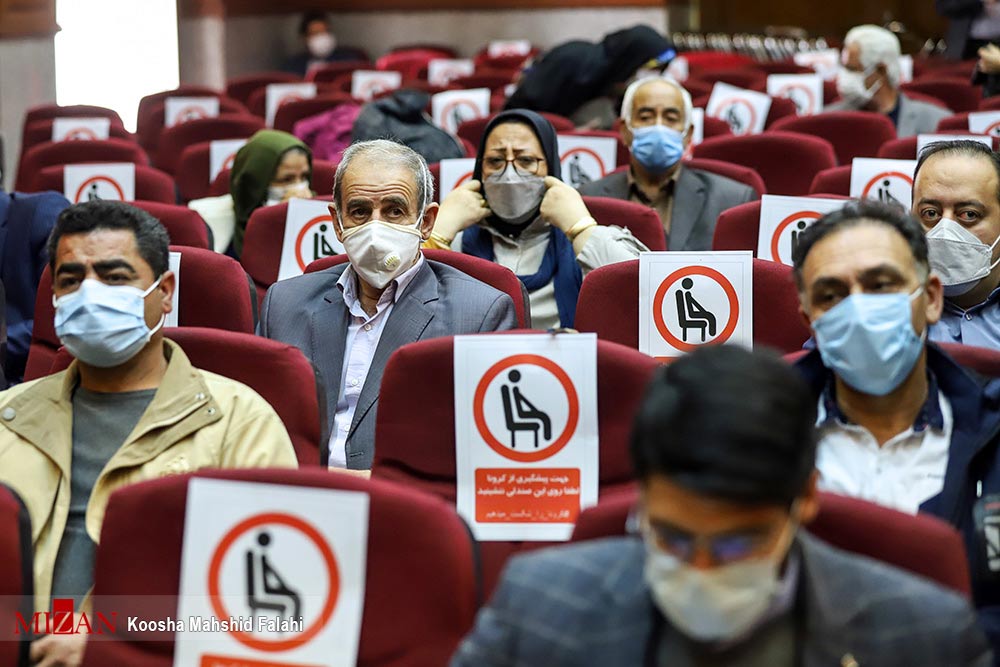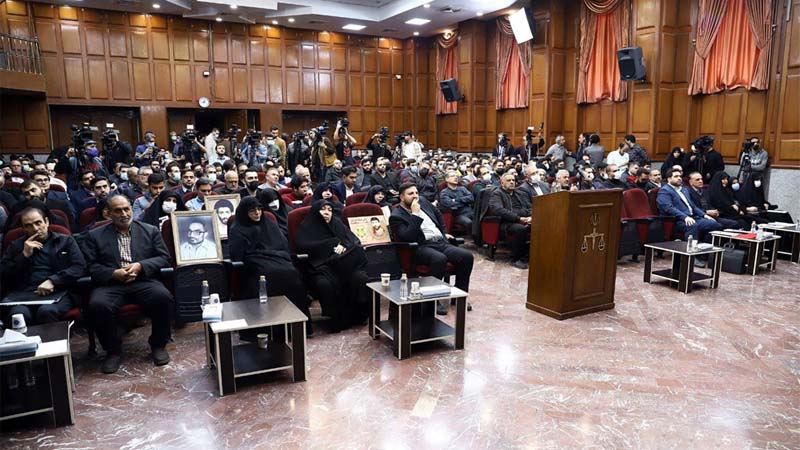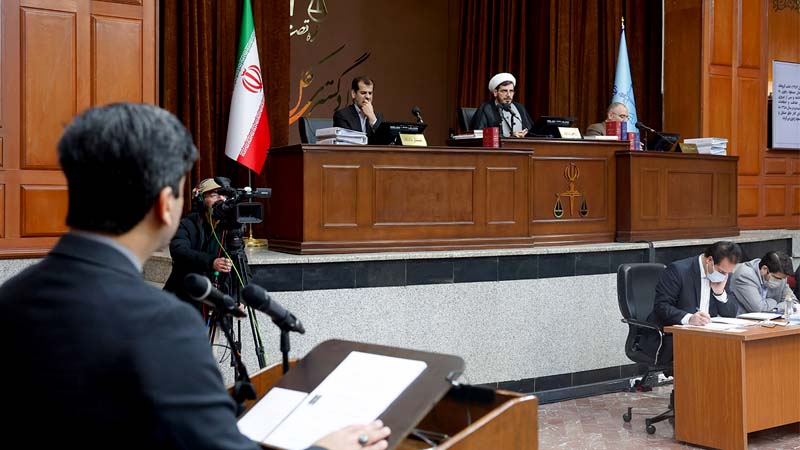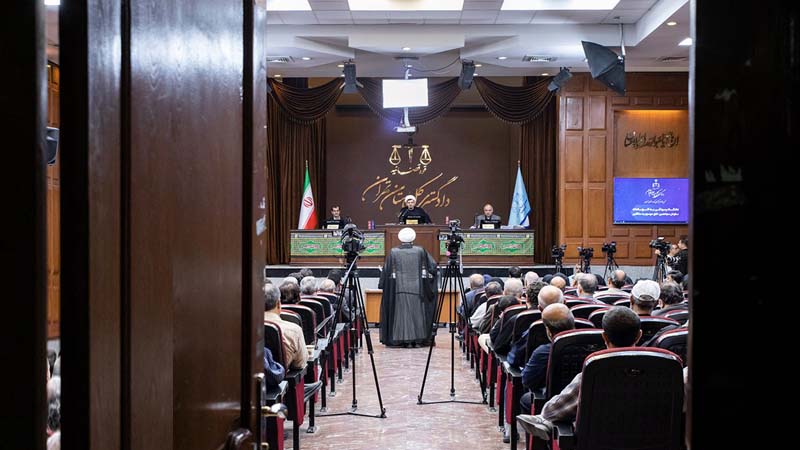The 20th session of the trial court of 104 Mujahedin-e Khalq (MEK) members and the group as a legal entity was held in Tehran. The recent session was held at the 11th branch of the criminal court of Tehran province on Tuesday, September 1st, 2024. The court was presided by Judge Dehqani.
The court was attended by the lawyers of the plaintiffs, the family of the victims, the lawyers of the defendants the prosecutor’s representative and survivors of the group’s terrorist acts and former members of the group. Iraj Salehi, former member of the MEK took the stand as the eye-witness of the group’s crimes.
At the age of 13, Salehi joined the MEK under the influence of the slogans of the organization. “The organization used to chant that it was looking for freedom and equality of men and women, justice and the freedom of Palestine,” he said. “I had activities in high school and in 1986 I went to Iraq from Turkey and I was there for 20 years. Over time, I realized that the organization was doing something in practice that was contrary to my thoughts and its slogans, but because it was a cult-like system, I was not allowed to leave.”
According to Salehi, after the fall Saddam Hussein, the power of the organization decreased, so he could manage to leave the group along with hundreds of other members. “Inside the MEK, we had no contact with the outside world and we had no information,” he told the court. “There was only one TV in the halls that broadcast their own programs. They had instilled that Iran is a village and if went go to Iran we would be executed, that’s why I wanted to go abroad, but my mother got sick and I returned Iran.”
Elahe Piruzfar, the lawyer of the defendants, appeared on the stand and asked Iraj Salehi some questions.
Piruzfar asked: You said that Massoud Rajavi implicitly accepted the party’s explosion.
“I heard from Massoud Rajavi that we killed 72 but 120 people,” Salehi said.
Piruzfar asked: You talked about the hijacking of the organization’s plane. How many do you know of?
“I know of a case where the plane was taken to France,” the defectors of the group said.
The judge noted: At the moment there should be questions about the bombing of the Islamic Republic Party.
Piruzfar said: Ms. Roqia Malek Mohammadi was an important member of the leadership staff for several years.
“She has been in charge of operations since almost 1972,” Salehi said. “Everyone in our unit knew that Ms. Malek Mohammadi was responsible for irregular operations.”
The judge asked the witness: “Did you hear from this lady that they carried out the party bombing operation?”
“Yes, we went to the border as a security force, they gave us Iraqi uniforms,” Salehi said. Female members did not come to the border to avoid being identified. Malek Mohammadi then went to the foreign relations department and was in contact with the Iraqis.
Piruzfar asked who worked in the media field.
“There were Zahra Marikhi and several others,” Salehi said.
Piruzfar asked: Who was the main decision-maker in the leadership?
“They once had a political office,” Salehi said. “In 1964, Massoud Rajavi dissolved the political office and said that all decisions were with me. Then the Executive Board was created. The executive board was dissolved again and the leadership council was established.”
Salehi, the former member of the organization, said: “In the 70s, we had operations called irregular operations and a series of operations called mortars. They used trained forces and the newly arrived ones and those who were likely to flee in the operations. In one case, two of the people who had fired mortars in Iran were given medals and honored in a camp called Taghizadegan. That happened in the 80s.”
The Judge: Do you know anyone from the officials of that headquarters?
Salehi answered: “Not all of them; But one of our officials was Zhila Deihim. I also remember Fazeh Hesari. These people used to select people and take them to another place for military training. They were taught how to work with weapons and how to install weapons and familiarize themselves with the conditions of Iran and their place of residence. Because the members of the MEK have been away from normal living conditions for years and had forgotten even normal tasks such as buying and selling, these people were taken to the city of Baghdad to have a little contact with normal life and social environment so that they would not be exposed during the operation.”
The Judge: Do you know what actions the central headquarters took against Iranian individuals or institutions?
Salehi said: “These actions were many and in some cases they gave notices about them as if this headquarters was present inside Iran, while this headquarters was present in Ashraf Camp and was carrying out its work in coordination with Iraqi intelligence and from the border areas. The terrorist forces were entering the territory of Iran.”
The Judge: Did you see that the members of the central headquarters honored the terrorists for carrying out the operation?
Salehi answered: “Yes, they honored two people for throwing mortars against the Iranian Ministry of Information. A woman who was the head of our headquarters, with the nickname Afsaneh, had operated in Khuzestan, and the MEK announced in their announcement that they hit a military center. One of our friends in that center used to mock: a few bullets were fired without a target. Also, operations were carried out in Ahvaz and Abadan. The details of this attack were not explained, but it was said in the announcement that military centers were attacked.”
Iraj Salehi continued saying: The attitude of the MEK was that whoever was released from prison had definitely betrayed and they repeated this issue many times in the meeting. Some people were introduced to foreign journalists as witnesses of torture in Iranian prisons. The fact is that Rajavi was looking for bloodshed and for him there was no difference between friends and enemies. On the one hand, he wanted to assassinate Iranian forces, and on the other hand, he wanted to show that Iran executes members of the Mujahideen. Many of the people that Rajavi had announced that they were executed in the executions of the 1360s in Iran were those who were killed in military operations of the group or even died due to illness.”
Judge: Do you know any people of the MEK people who have disappeared?
Salehi said: “A person named Saeed, an officer of the group’s intelligence department, went to the southern borders of Iran in Khuzestan province with the team for identification in 1993. When the team returned, they said that Saeed had drowned. There were many of these cases, for example, a person who had normal physical health was once said to have died.”
The judge: Did Masoud Rajavi have a special doctor?
“Yes, I don’t remember his name”, he said. “They told all of us in 2001 that we do not have a sick mujahid.”
Judge: Did you see anyone sick among the members? Did you see a sick person?
The former member of the organization said: “One person was from Khuzestan and he was a perdon with high technical skills and a high-ranking member of the group. He was healthy, one day I was informed that he had a stroke and died.”
Judge: Do you know the number of people in the organization during these years?
He replied: “I don’t know this, but 6 thousand people participated in Mersad operation. The Americans announced that there are 4,500 people, and nearly 2,200 to 2,200 of them left the organization, and some of them were killed due to illness and conflicts that Rajavi deliberately caused, and I don’t think they are now more than 2,000 people.”
Mentioning an example, Salehi said: Maryam Rajavi used to teach us that if they told you that you ruined something, even if you didn’t, you have to prove that it was your work. Or, for example, Masoud Rajavi used to say in the eighth year, we brought you a gift, we have a meeting on Fridays, come and discuss the sexual issues you see in your mind or in your dreams. They tried their best to crush the character of their members. No one was valuable to them.
Judge: How many years have you been a member of the organization?
Salehi said: 20 years.
tria
Salehi stated that in the operation of Mersad, the organization was defeated and had no connection with the outside world. After that, they themselves said that they took 2,000 prisoners of war from Saddam Hussein. After the ceasefire was announced, a thousand people left in one day. After Mersad, which had many casualties, there was not much recruitment of the organization. At that time, they used to recruit people from the borders of Iran and told them that you have to work for 2 years in order to get you a German visa and money. When these people came, they told them that you joined the liberation army and that there is no marriage; divorce is forbidden.
Salehi said, “One of them said, I don’t accept you, they took him to the cemetery, they showed him a grave, they said what is your name, He told them a name, then they said, what is your real name? He said that I came with a pseudonym, they said that if we throw you in this grave and bury you, no one will know that you were here.”
With these methods, they kept forces inside the group. They brought a person named Abdullah Afghani, who was not Iranian at all. They also brought Pakistani people and changed their documents, and later when America wanted to return these people to their country, they faced many problems. Even after the fall of Saddam, if there was any recruitment, it has been very few.

